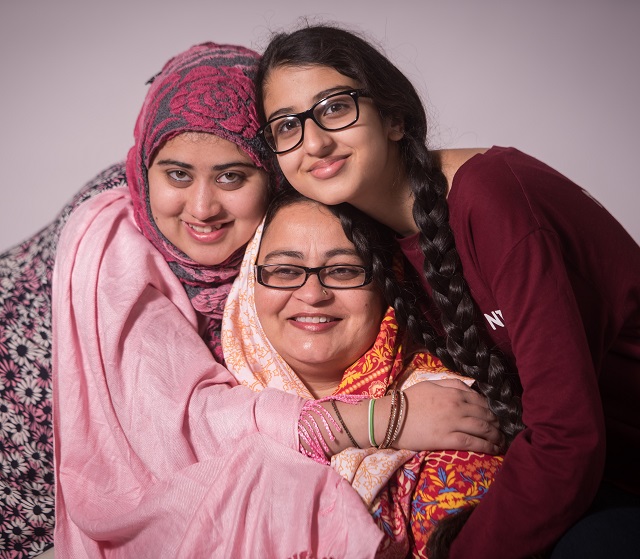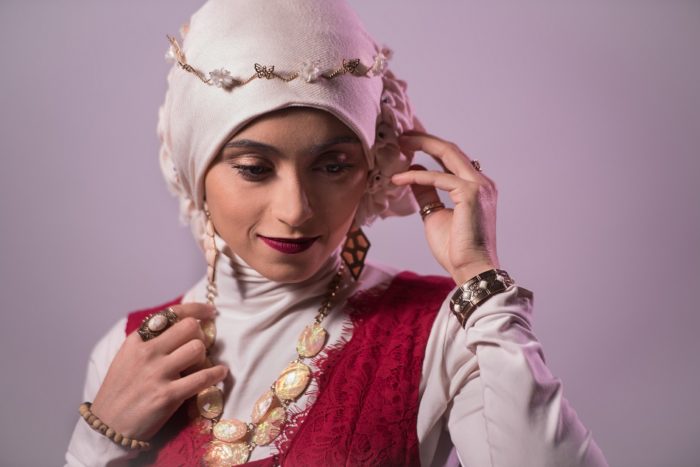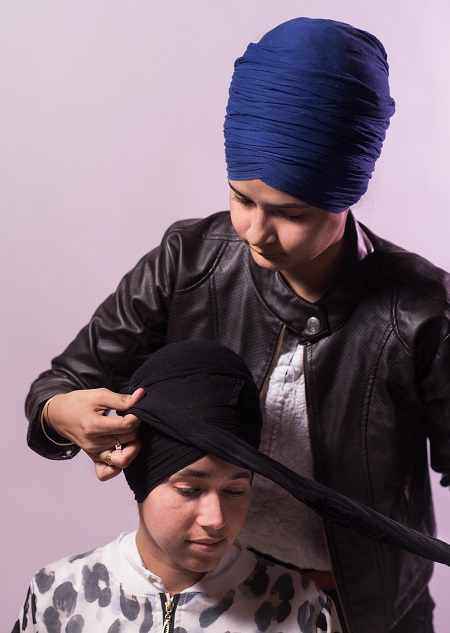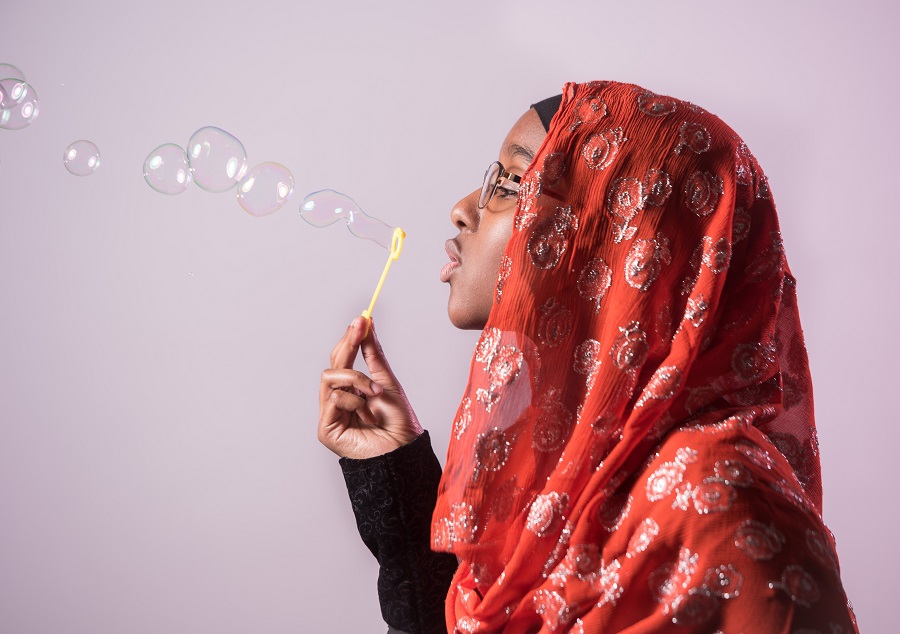A local art exhibit turns a feminist gaze on Muslim and Sikh women’s head coverings.

April 6, 2017
When you see a woman in a veil, what do you really see? Hopefully another human being, not what she’s wearing.
A few women in Cambridge, a small city near Toronto, hope to adjust the frame around the popular image of the religious head covering in contemporary “Western” society with an exhibit demurely titled (UN)Covered. The photographic portrait project, which was exhibited as part of Women’s History Month at the local YWCA, offers a glimpse into how women’s headwear can reveal what is deeply invisible in our culture.
“I just want to bring these groups together in open conversation,” says the project’s co-coordinator Abiha Syed, who came to Canada over 20 years ago from Bangalore. “I am not challenging why they cover their hair, I am not challenging the stereotypes, none of that. It’s just let’s talk.”
(UN)Covered presents dynamic portraits, by photographer Simrin Dhillon, of Muslim and Sikh faces, framed by their preferred covering: showing themselves full, frank, and unapologetically fierce. Depicted on their own unorthodox feminist terms, the models’ decision to wear a head covering comes across as proudly expressive. Some are tender shots of families, some playful, others simply stunning, painting a vivid composite of communities that popular culture tends to obscure in religious stereotype and cultural monochrome.

Of course, what women wear around their heads does mean something. It just seldom reflects what the news and social media insinuate—the alien, sinister or exoticized images that trade on sensation and fear. Those institutions often find it more convenient to project societal anxieties onto the image of the hijabi than to actually go the extra distance of asking her to explain her own decision.
So UN(Covered) invites viewers to do exactly that: to encourage questions and dialogue. Syed says, “The idea was that I just want to open conversations. I find that our communities are very segregated, depending on your color or how you dress.” Every scarf is a conversation starter, even an ice breaker.
For 16 year-old Laveeza the hijab she displays in her portrait signifies protection from unwanted encounters in public and negative interactions with peers. It’s also a way of projecting her own strength, and a sense of rootedness and tradition, to the external world:
When I wear a head covering, I feel as though I am the sun and gazes are averted immediately… unlike the moon upon which everyone casts their eyes. Growing up, I watched as my mother would always keep her head covered. I watched, I learned, and I wanted to do just as she did, so that I too could perceive the protection it could provide for me.

Jagroop, who is Sikh, reflected that her turban (which is not traditionally Sikh women’s garb but increasingly common today) gives her a sense of empowerment. It commands respect, even for those who may not fully understand the history and philosophy of the Sikh headdress tradition:
It is my identity, a promise, an honor that carries along pride of a great history. It makes me who I am: One of Guru’s daughters who will stand out among millions. My turban has always motivated me to be true to yourself…. Because of my turban, I always get respect from everyone.

“Hijab compels men or women to focus on the real personality, and deemphasizes the physical beauty,” says Syed. “It puts the women in control of how she’s perceived. It just gives her that extra confidence.” In the interviews that formed the foundation of the photography project, she adds, “All of these girls say that hijab only gave them the confidence, it didn’t stop them, it didn’t restrict them.”
When 14 year-old Madiha dons a headscarf, she deliberately reveals an evolving self-consciousness, or political consciousness, demonstrated through discipline of the body. “The hijab is a huge red flag for everyone,” she says. “My head screams, “Hey look, a Muslim!” So every moment, I must keep it in my head that how I hold myself, how I walk. I need to keep a good image for Muslims all around.”
Hoda weaves her veil into her spiritual evolution. “Hijab is my moving home,” she shares. “It’s my safe haven. Personally, wearing the hijab made me grow and focus on different aspects of life. Behind every Hijab, there is a story.”

Syed hasn’t encountered much overt racism in her community, but recalls recently getting a fleeting, but unmistakably negative glare from a passerby at a local mall. She responded with a smile and a kind word, and meant it. The stranger smiled back, and Syed hopes the brief exchange, however awkward at first, left them both more likely to smile next time.
Syed contemplates the recent controversies over Muslim women’s veiling, from anti-burqa laws in France to mass movements by American women, Muslim and non, to wear the hijab as a form of protest. At the end of the day, though, a religious head covering is designed to make you think beyond the surface.
“I am a taxpaying citizen. I am an educated woman,” she declares. “I am raising my daughters to be educated, strong women. We are doing more than our share.”
(UN)Covered depicts the veil not as a barrier, but window beyond the distorting mirror of politics. And through the lens of art, the portraits are nothing more and nothing less than defiant individual fashion statements of self-determination.
There are, after all, more important things to talk about, as women of all backgrounds question how to realize their aspirations and coexist in a world where borders are hardening. Including how their sisters and daughters can navigate the most daunting barrier that holds them back: gender inequality itself, which threads through all our cultures. That’s the conversation that we all risk evading when we affix our eyes on what’s on a woman’s head instead of what’s in it.
Every gaze on our peers from a new angle transcends a new border, both those displayed on our bodies, and those within our minds.



